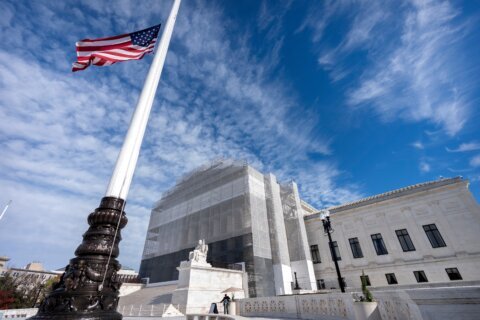THE HAGUE, Netherlands (AP) — The Mauritshuis museum in The Hague reopens June 27 after a two-year renovation that allowed some of its treasures to travel abroad. Here are some facts about the collection:
WORLD TOUR
Rock stars might be envious: 2.2 million people came out to see the paintings while they were on the road. In 2012, the Mauritshuis exhibition in Tokyo was the most-visited art exhibition in the world, while in New York, visitors waited outside for hours in freezing weather to see it at the Frick, where it broke attendance records.
COLLECTION
The Mauritshuis houses masterpieces from the Netherlands’ 17th-century Golden Age, including Vermeer’s iconic 1665 “Girl With a Pearl Earring,” three Rembrandt self-portraits and works by Jan Steen, Frans Hals and Peter Paul Rubens. A 1654 painting by Carel Fabritius, “The Goldfinch,” came home to Holland much more famous than when it left thanks to a best-selling, Pulitzer Prize-winning novel of the same name by Donna Tartt.
HIGHLIGHTS
It’s hard not to be stunned by the variety and quality of the museum’s 800 paintings, which even after the renovation are in relatively tight spaces. Literary visitors will thrill to the sight of “Girl With a Pearl Earring,” ”The Goldfinch,” and Rembrandt’s “Anatomy Lesson of Dr. Nicholaes Tulp,” also the subject of a new novel. Vermeer’s 1660 “View of Delft” plays a small but important role in Proust’s “Remembrance of Things Past.”
Other jewels include Frans Hals’ 1625 cute, buck-toothed “Laughing Boy.” For an early critique of Dutch loose living, check out Jan Steen’s “As the Old Sing, So Pipe the Young,” the first known picture of Dutch youth caught smoking something. Animal lovers should see the museum’s biggest canvas, Paulus Potter’s 1647 “The Bull.” ”The Garden of Eden With The Fall of Man” was a joint project of Rubens and Jan Brueghel the Elder.
RENOVATION
The museum’s space was doubled to accommodate 250,000 tourists annually — a 25 percent increase. The square out front is now a lobby with skylights. A nearby building now houses a cafe, shop, library and temporary exhibits.
HISTORY
The Mauritshuis was built in 1644 in the center of The Hague for nobleman Johan Maurits, was purchased by the Dutch state in 1820, and became a museum after the Netherlands’ first king, Willem I, donated his paintings.
Copyright 2014 The Associated Press. All rights reserved. This material may not be published, broadcast, rewritten or redistributed.







